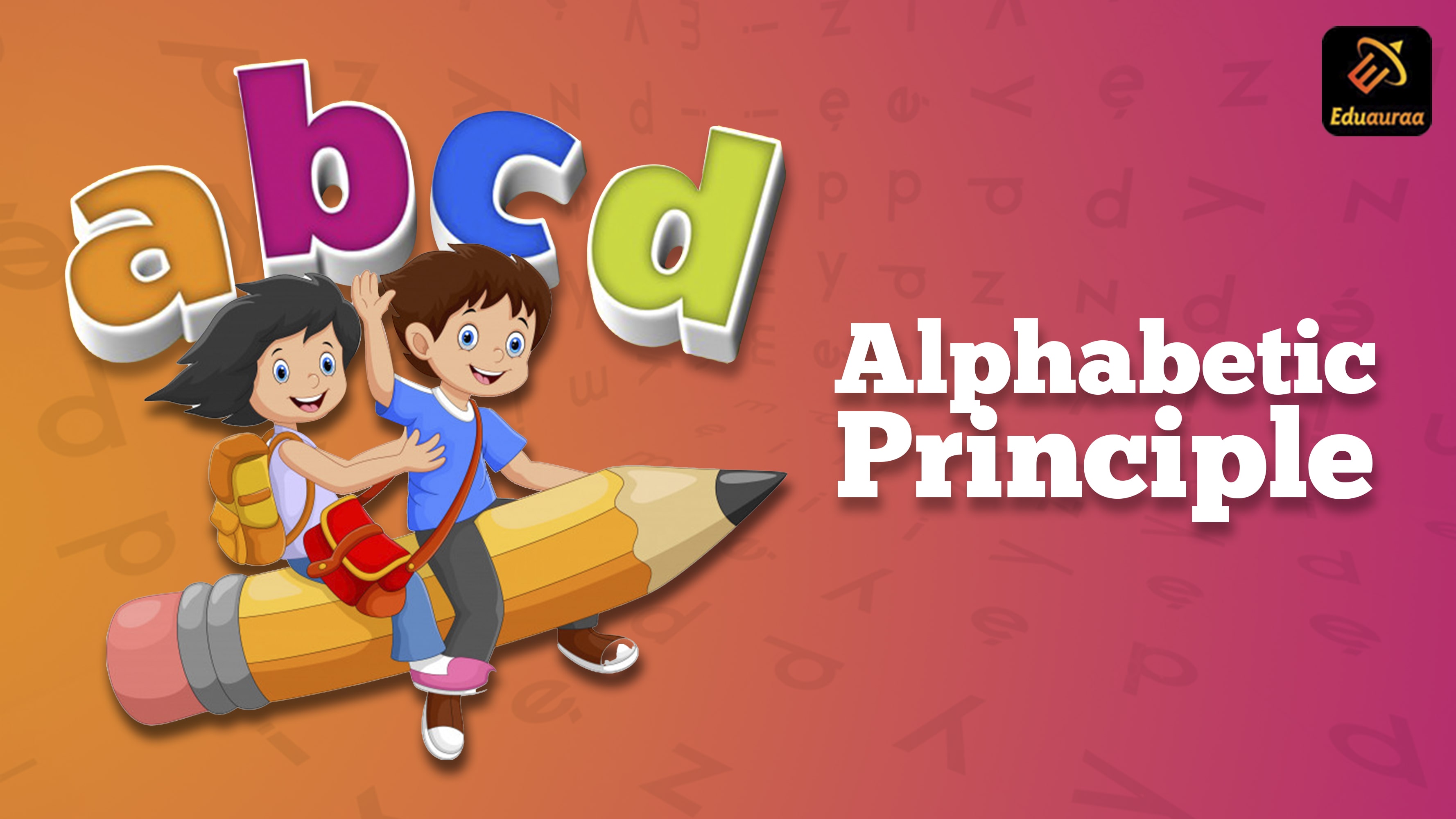Alphabetic Principle | Eduauraa Blog

Children's ability to develop reading skills depends upon their knowledge of letter names and shapes.
Once a child memorizes the letter names, he or she can remember the forms of written words and can identify words as a sequence of letters.
However, there are some children with under-developed alphabetic knowledge.
Therefore, when they start going to school, a systematic and practical instruction process should be applied to help them. This is called the 'Alphabetic Principle.'
'Alphabetic Principle' Meaning
The basis of any language is its alphabet. With this regard, the concept that the letters and their patterns signify the sound of the pronunciation is called the alphabetic principle. It is essential for the reading development of a child.
Making children understand the relationship between letters and sounds helps them with both straightforward and complex words. This ultimately shapes their fluency in reading.
Two factors play a vital role in shaping up the alphabetic principle- the plan and the rate of instruction.
The Plan of Instruction
a. The alphabetic principle lets children practice the letter-sound connection daily.
b. It allows children to read phonetically spelled words with familiar meaning through their expanding insight into letter-sound relationships.
c. Moreover, the letter-sound relationships are taught in isolation explicitly.
d. Children also get the scope of practicing new letter-sound relationships, with collective reviewing of earlier taught relationships going on simultaneously.
The Rate and the Sequence of Instruction
No instructions are specifying the date of introducing letter-sound relationships. Moreover, there is also no proper sequence in which they should be introduced.
However, it is generally acknowledged that relationships that'll help children to develop reading words the fastest should be a starting point. Hence relationships with a high utility such as spellings m, t, a, p, s, and h are selected.
A good idea is teaching consonants like f, m, r, n, s at the beginning since these can be pronounced with isolation and minimum distortion.
Separation of sounds for letters that are auditorily (/b/-/v/ or /i/-/e/) and visually (b-d or p-g) confusing should also be done.
The main point that should be given the utmost importance is the order of introduction.
It should be taught consistently and logically to facilitate a child's learning rate. Moreover, the introductory letter-sound relationships should allow children to start reading faster.
The Rate and Sequence of Instruction Guidelines
a. Early teaching of highly applicable letter-sound relationships
b. Synchronized introduction of visually or auditorily same letters and sounds can be avoided
c. The introduction of letter-sound relationships is done at a manageable speed. Usually, in a week, the range varies from 2 to 4 letter-sound relationships
d. The words with the letter-sound relationships that the children have already understood are provided by blending with the instruction
e. Acknowledge that there are various rates regarding children learning letter-sound relationships
f. In order to make children read words faster, consonant and vowels are introduced in a sequence
g. Single consonant sounds and consonant clusters/blends are taught through different lessons.
Therefore, these are the details regarding the Alphabetic Principle. Understanding its working and teaching children through these effective measures will surely help them reach their full potential in terms of phonetics.








